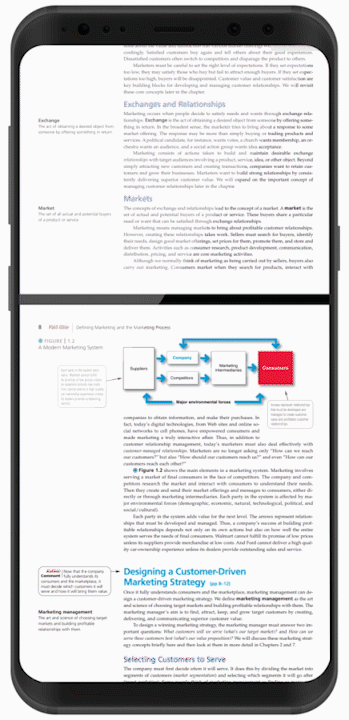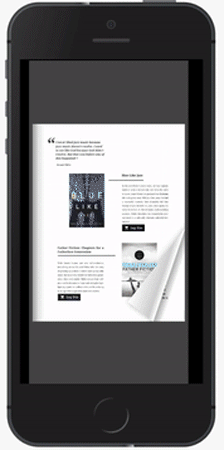◤
PDFs Are Not Sustainable.
Here’s Why
When Adobe first launched PDFs back in 1993, they revolutionised the way desktop users exchanged documents online. But while PDFs are still suitable in specific situations, modern-day internet users will have to suffer through some limitations.
sFirst off, PDFs don’t take mobile users into account. A PDF can’t be optimised based on reading behaviour and its distribution is hard to track.
Modern marketing and communications professionals want to leverage technologies that create user-friendly and frictionless online reading experiences.

◤
Here are the 6 most significant PDF drawbacks:

1. Unresponsive
PDFs are fixed-layout documents, which means that they’re extremely difficult to read on a mobile device. With internet usage shifting from desktop to mobile, modern companies can’t afford to lose visitors due to readability issues.

2. Difficult to share
Sharing PDFs takes a lot of work. The bulkier your files are, the more steps visitors must take before they download and read your content, let alone share it. Often times, those visitors may not have the will (or the time) to go through all these steps just to download your document.

3. Unmeasurable
Modern marketing thrives on the ability to gather data in order to make improvements. With PDFs, the only available metric is the number of downloads. Readability, interaction, engagement and conversions are impossible to measure in PDFs.

4. Poor in rich media
Videos, animations, social media buttons, infographics and overlays contribute to a more engaging reading experience. PDFs may let you add hyperlinks, but that’s pretty much the extent of what PDFs can do in the way of rich media in your documents.

5. SEO-unfriendly
A PDF is unsearchable. The PDF file itself might show up on search engine result pages (i.e. the filename or its landing page), but not the content within the PDF. On top of that, PDFs don’t include alt text or meta tags that help describe visual elements and the document itself, which might hurt the document’s SEO as a result.

6. No version control
You cannot go back and update a PDF after it is shared and distributed. That’s not handy at all, especially for collateral that involves research such as white papers, eBooks, brochures, and annual reports.
◤
But what about browsable PDFs?
Browsable (or flippable) PDFs are an improved version of plain PDFs. However, they still lack interactive capabilities like mobile-responsiveness and pop-up forms that modern-day readers want to see in their content.

